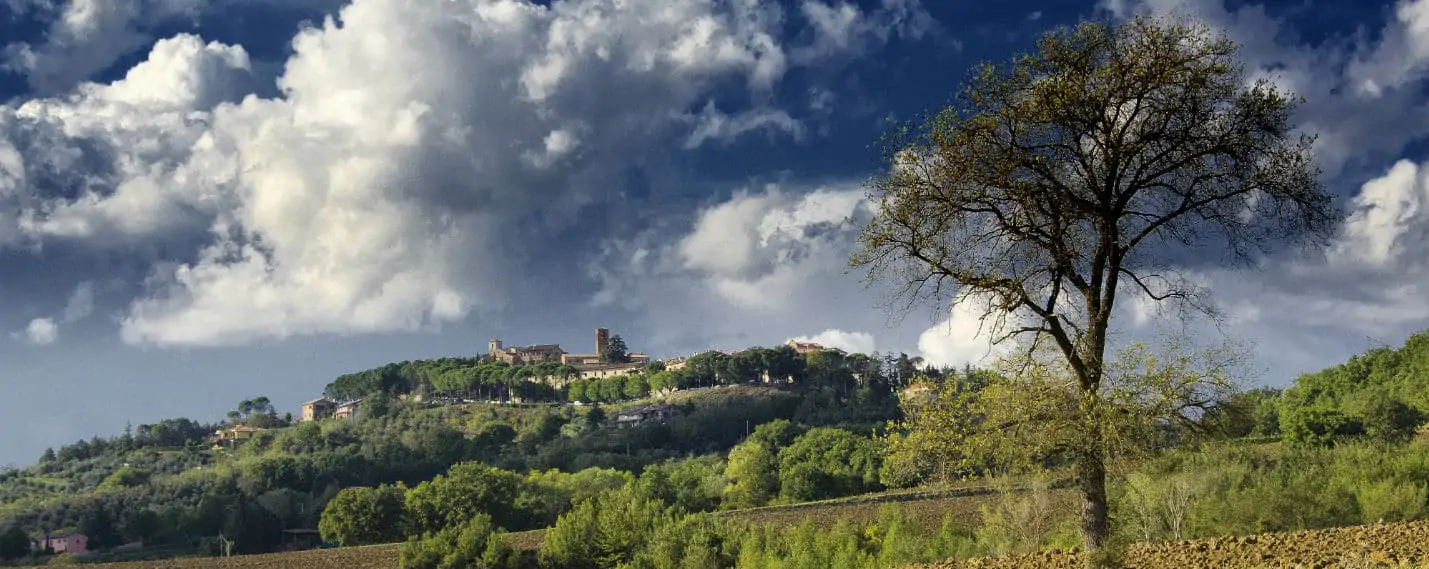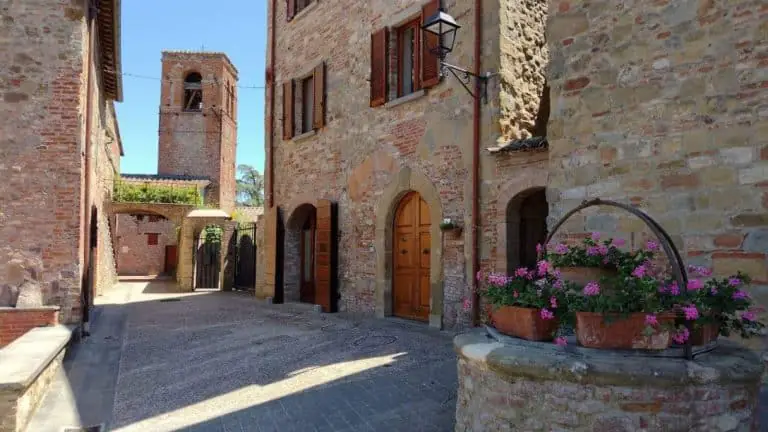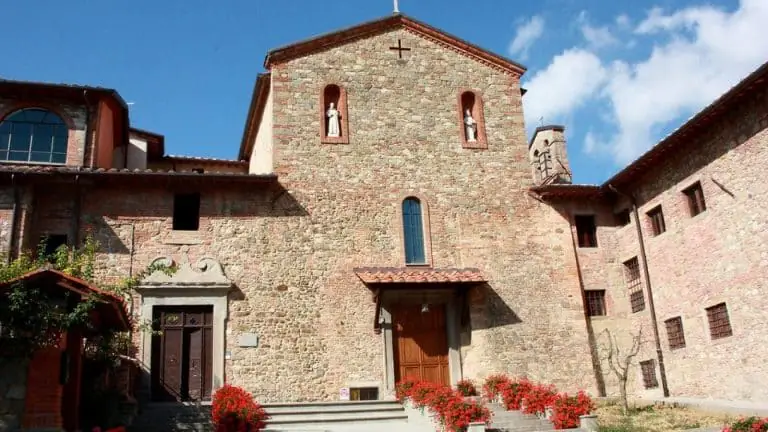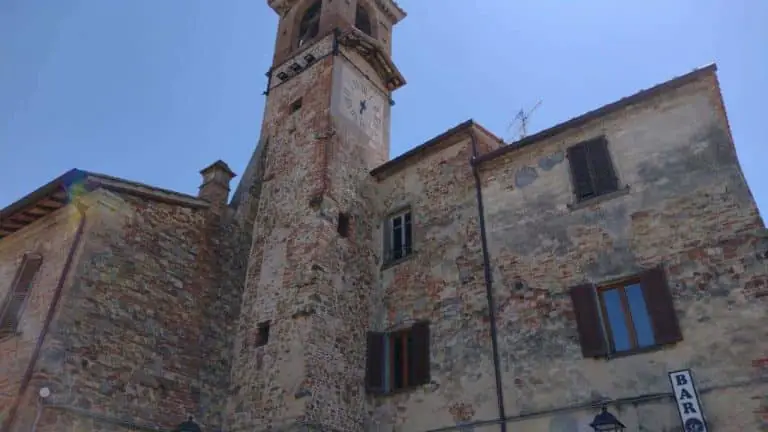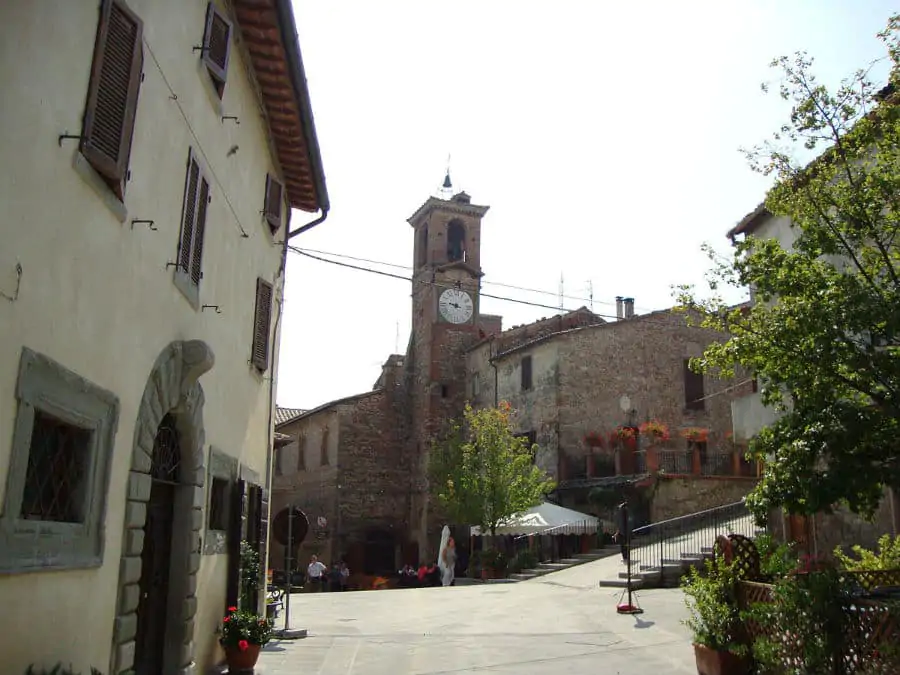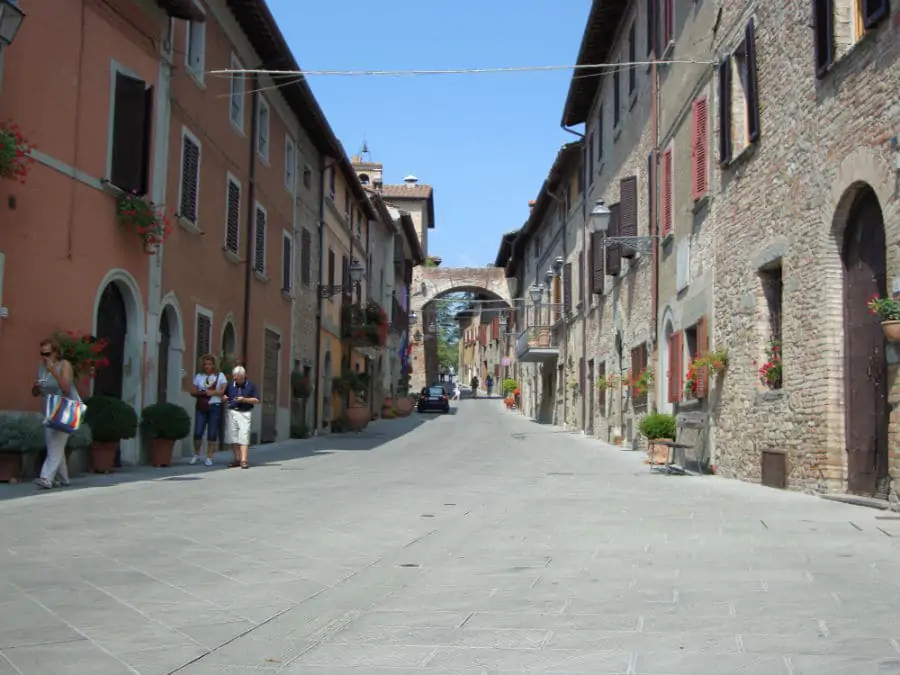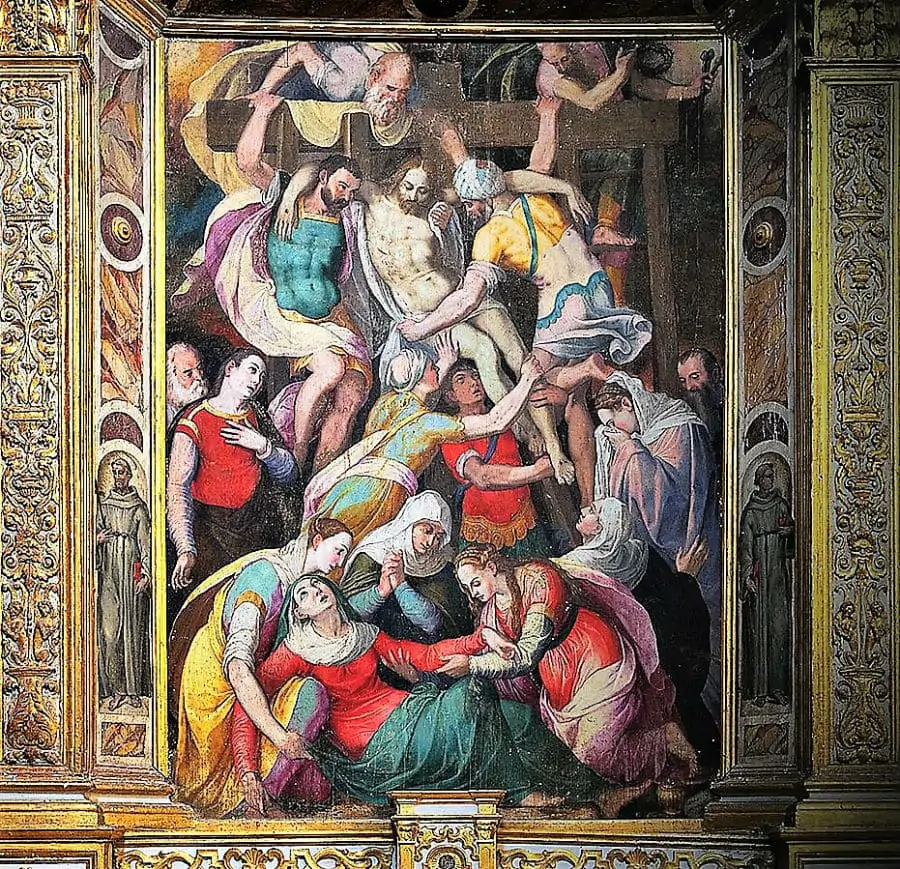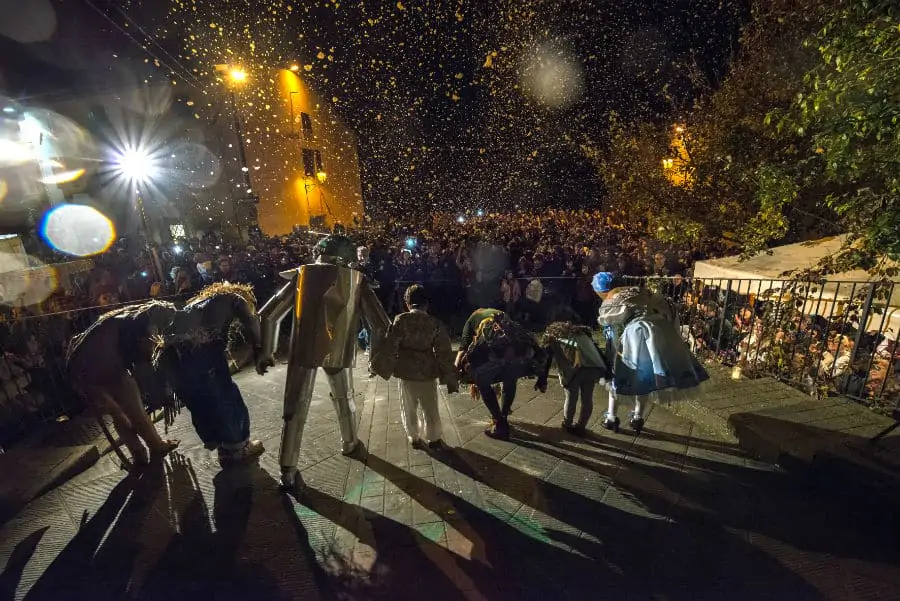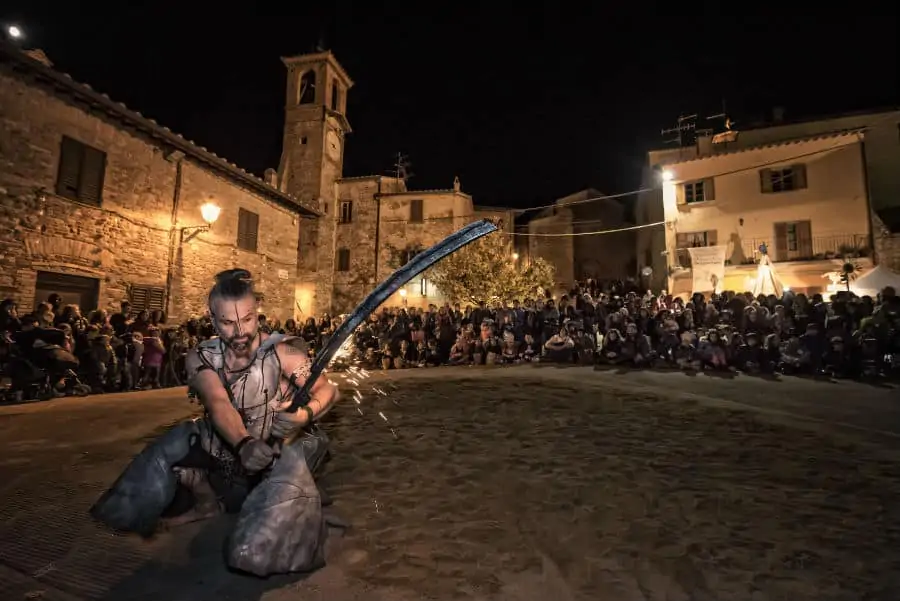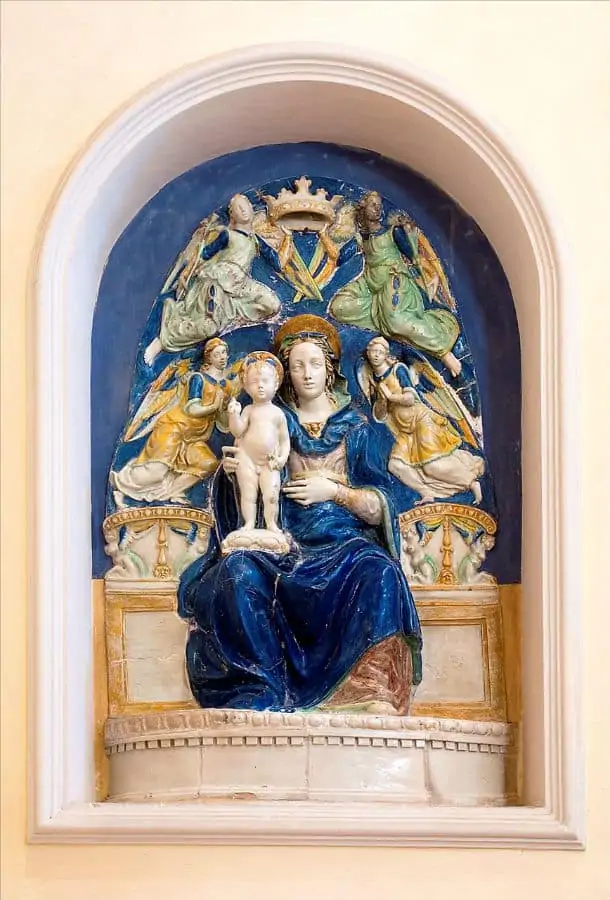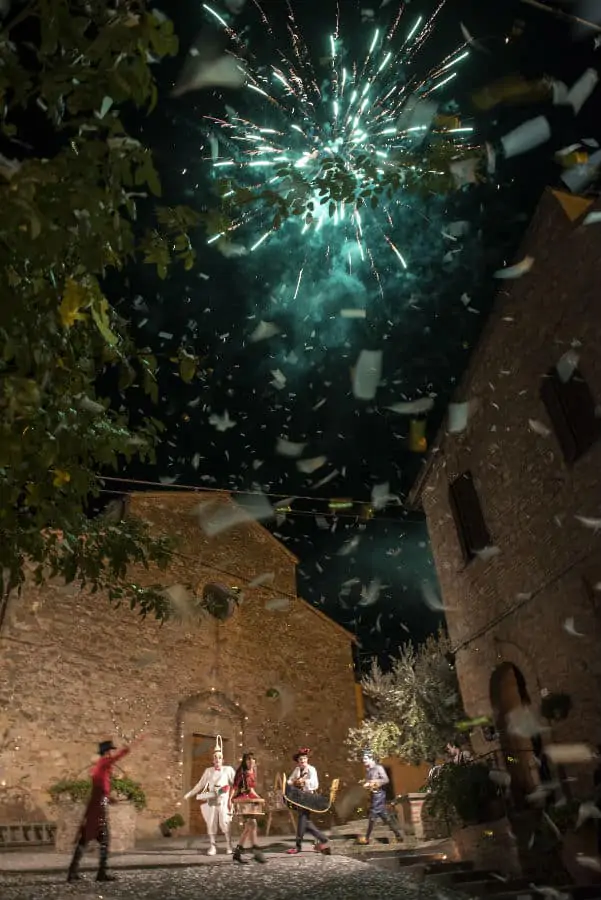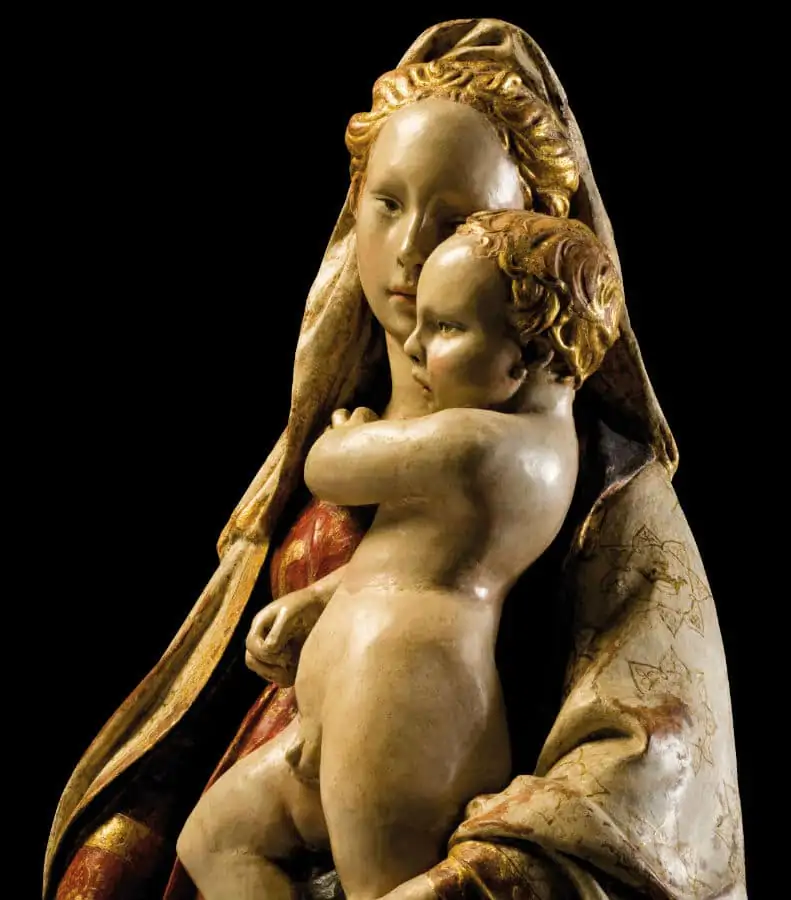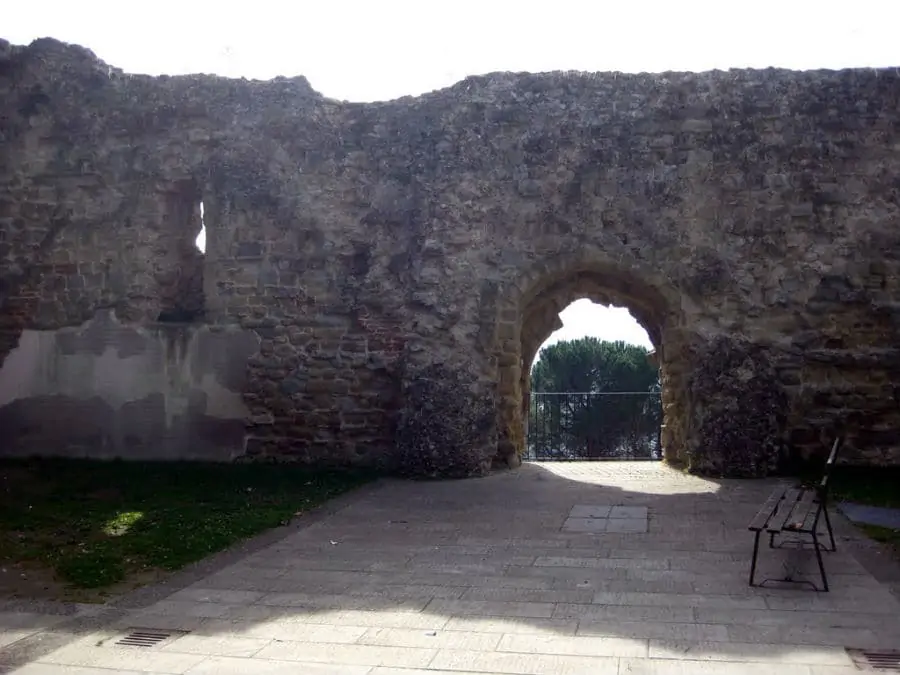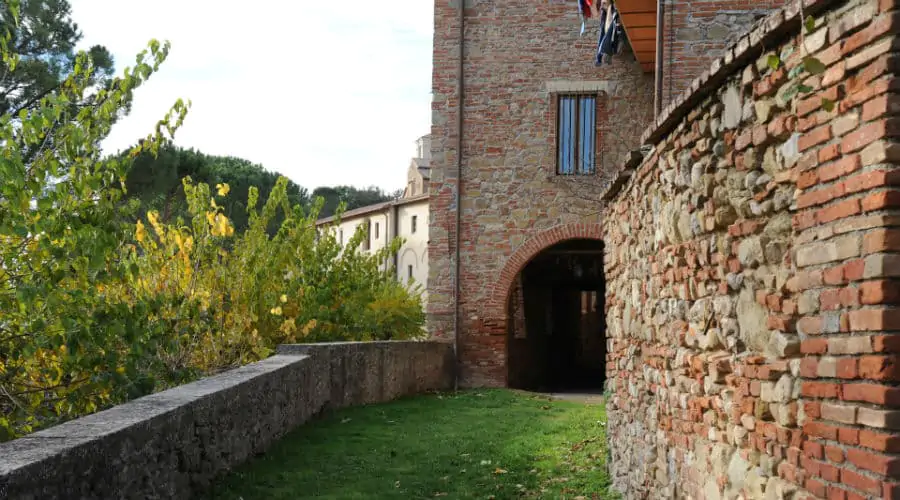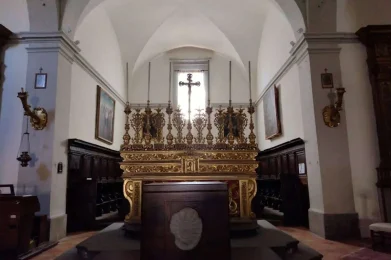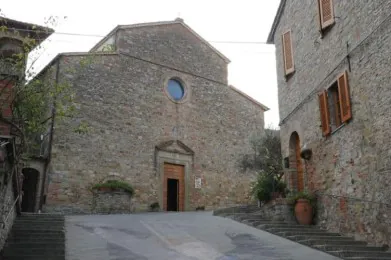An ancient sentinel among the valleys
Of Umbrian-Etruscan origin, the village of Citerna was known in Roman times as Civitas Sobariae, and in the Middle Ages it played a strategic role as a lookout fort. Its mighty walls, the Round Tower - now the symbol of the town - and the Western Bastion tell a long history of domination, looting and rebirth, from that of the Malatesta family to the Church State, up to the Vitelli period and the decisive entry into the Kingdom of Italy in 1860.
A historic center to explore at a slow pace
Walking through Citerna means walking along a covered medieval walkway that follows the route of the ancient walls, overlooking spectacular views between Umbria and Tuscany. The heart of the village is the church of San Francesco (1316), a treasure trove of treasures such as the Pomarancio Deposition, frescoes from the school of Luca Signorelli, a Della Robbia terracotta and the famous Madonna and Child in polychrome terracotta, now attributed to the young Donatello.
Also not to be missed are the church of San Michele Arcangelo, the elegant Palazzo Vitelli and the Palazzetto Prosperi, with the romantic Hall of the Lovers' Fireplace.
A natural setting of rare beauty
Citerna offers breathtaking views: from the terrace of the Rocca, the gaze sweeps as far as Mount della Verna and Mount Fumaiolo, the source of the Tiber River, passing through Upper Tiber villages such as Sansepolcro. Views of the Cerfone and Sovara valleys frame the village in every season.
A village that lives and engages
There is no shortage of traditional events, festivals dedicated to typical products, outdoor concerts and cultural events that enliven Citerna all year round, making it an authentic place where one can feel part of a welcoming and living community.
The surroundings to be discovered
Near Citerna you can visit the striking former monastery of the SS. Crocifisso in Cerecchio, the churches of Santa Maria and Santo Stefano in Pistrino, and the hamlet of Fighille, known in the Middle Ages for its pottery production. The roads that climb the hillside, among vineyards and woods, are perfect for those seeking a slow and rejuvenating experience.
Citerna is more than a village: it is a balcony suspended between art and nature, a place that tells the story of authentic Italy and invites you to slow down, look away and be enchanted.


